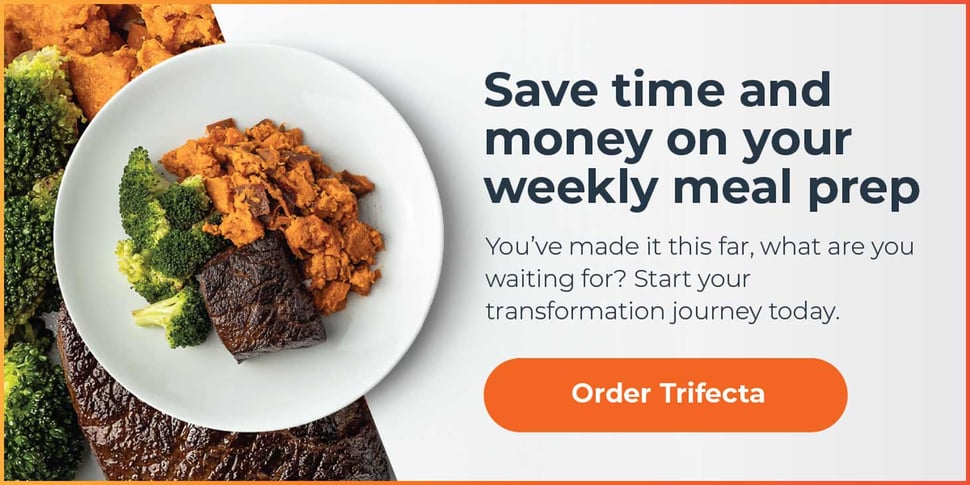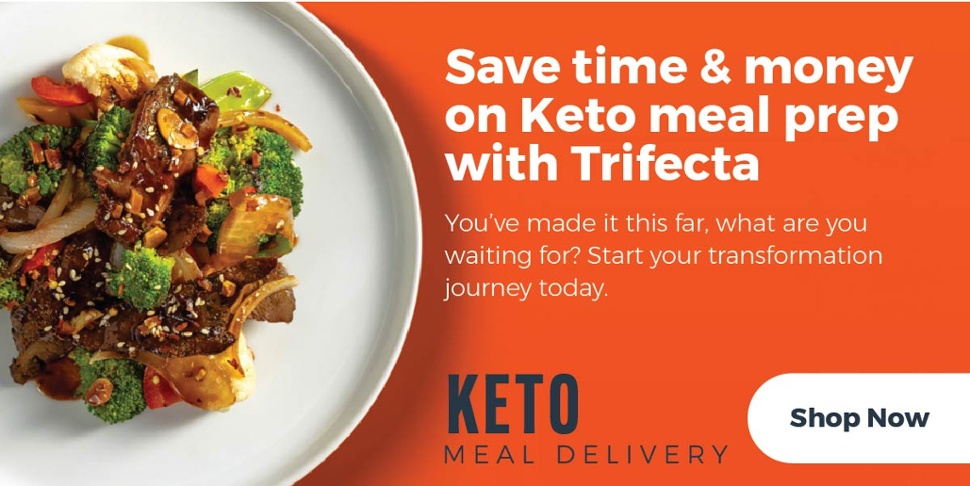Thinking about starting a keto diet and wondering if it is the right fit for you, or how to go about it? Here are the basics, along with expert tips and everything else you need to know to begin a keto meal plan, keep your nutrition in check, and get real results.
Get started on your new keto diet like a pro with the comprehensive keto meal prep toolkit for free. Complete with keto food lists, custom macro calculations, and meal planning templates!
Is a Keto Diet Right for You?
While keto eating has become trendy and is getting plenty of attention and praise all over social media, most don’t quite understand how it works or why it works so well for some people.
How a Ketogenic Diet Works
A ketogenic diet is unique in that it is usually a drastically different macronutrient approach - very high fat and very low carb - designed to force your body to rely on more fat for energy than sugar. This process of switching to fat (or ketone bodies) for fuel is called ketogenesis, and the state of being in ketogenesis is called ketosis.
Ketogenic Diet Benefits
There are some potential benefits of ketosis, but so far, the research does not indicate ketosis is more beneficial than calorie control alone.
So why the heck would one try a ketogenic diet then?
Well, eliminating carbs also eliminates a lot of food options - especially processed foods, beverages, and desserts that are packed with added sugar. Thus, it can be quite easy to cut calories automatically.
Additionally, the macro ratios of a keto diet favor savory, rich foods, which can be much more desirable for those that don’t enjoy traditional lean diet foods. And ultimately, enjoying the foods you eat more, means you are more likely to stick to your meal plan and get results.
Disadvantages of a Ketogenic Diet
On the flip side, it is still possible to gain weight on keto if you’re overdoing it on portion sizes.
Also, sticking to a keto diet can take some serious dedication. It requires you to track your daily macros accurately, and have a basic understanding of nutrition, and stay on top of all the foods and ingredients you eat. Not to mention, keto flu is a common side of effect for many who switch to a keto lifestyle.
Yes, a drastic change in your diet can help kick start fast weight loss, but real results take time, and your focus should be on lifestyle changes, not quick-fix solutions. So if eating keto doesn’t sound like something you’d be interested in long-term, that’s definitely something to consider.
Bottom Line
Weight management is most strongly influenced by consistent calorie control. So if a keto diet sounds like the type of diet you’d enjoy eating and would be able to stick to long term, go for it! But if it sounds like too much work or you prefer to eat more elan, you can be just as successful on another weight loss diet.
Moreover, while keto is safe for most people, it is still recommended that you speak with your doctor before beginning a keto diet.
5 Steps to Getting Started on Keto
Regardless of what you see on the internet, just eating keto foods does not guarantee results. To get the most out of your program, you’ll need to fine-tune your calories, macros, and keto meal prep approach to match your goals. Luckily, once you understand where to start, this process does not need to feel difficult. In fact, the more you simplify your approach, the better off you will be, and the fewer mistakes you’ll make.
To assist you in seeing progress and making a keto diet work for you, here is your step-by-step guide to getting it right:
Step 1 - Determine Your Fitness Goal
Before going into any diet, the first step should always be identifying your “why” or your primary goal - this will establish your dietary needs and guide your focus moving forward. As well as how you can determine if your hard work is paying off.
There are four main reasons why someone would consider changing up their eating, and not all of them are a great fit for keto:
- Weight loss
- Muscle Gain
- Improved Performance
- Improved Health
Weight Loss
Weight loss or fat loss is the most common reason why someone would consider trying keto. If this is your goal, maintaining a calorie deficit is your number one agenda. And your progress can be measured by seeing the number on the scale decrease or by adjusting your body composition, which can be assessed using any body fat analysis tool.
Muscle Gain
Muscle gain is essentially weight gain and is not always the ideal starting place for everyone. Moreover, a ketogenic diet may not be the best diet for building muscle, given the beneficial role of carbohydrates in training, and muscle recovery. But that doesn’t stop everyone, and some people will see results. Achieving more muscle will require you to focus on extra calories, training, and macronutrient balance. And to accurately measure your progress, a body composition test is required.
Improved Performance
Fat can be an abundant and valuable source of energy that many athletes would like to tap into. This is precisely why keto is also used to increase performance in endurance athletes and those who do not require consistent explosive power or frequent high-intensity training. Nutrient timing and adequate fueling is the primary focus of this goal, and performance progress can be measured through fitness goals or assessing metabolic efficiency.
Improved Health
Improving health is not always a primary goal of keto dieters - unless health is improved as a result of losing weight. This is because a keto diet is fairly restrictive, and getting high amounts of vitamins and minerals (micronutrients) can be challenging. If you are looking to keto to improve your nutrition, nutritious food choices should be top of mind. Progress towards this goal can be measured through biometric testing (health assessments).
However, emerging research continues to look at the potential benefits of low carb and keto diets for individuals with diabetes.

Step 2 - Calculate Your Daily Calorie Goal
Once you’ve identified your main health and fitness goal, the next step is to calculate how many calories you need to eat a day in order to lose weight, gain weight, or maintain your weight.
The easiest way to do this is with an online calorie calculator or by downloading a fitness app that uses your age, height, weight, gender, and fitness level to estimate your daily needs.
- Learn more about how many calories you burn each day.
- Learn more about how many calories you need a day to lose weight.
- Learn more about how many calories you need a day to gain weight.
Step 3 - Calculate Your Keto Macros
While it is your calorie control that has the largest impact on your weight, understanding your keto macros is still pretty fundamental to your success. Especially if you are trying to get into ketosis, hitting your carb goal each day is crucial.
Use our keto macro calculator to help you get started.
The keto diet is designed to follow strict macronutrient targets, including high fat and extremely low carb intake. For most people, this breakdown looks something like the following:
- 70% of calories from fat
- 25% of calories from protein
- 5% of calories from carbs
However, the exact ideal macro ratio for you can be dependent on your fitness, metabolic efficiency, and other individual considerations.
Step 4 - Plan Your Keto Menu
Now you're ready to start planning your dream keto menu. But before you start loading up on bacon and cheese, there are a few things to consider when it comes to your food choices.
The nutrition and quality of the foods you eat are still important for your overall health and well-being. Additionally, choosing more nutritious foods may help with energy levels, mood, and potential cravings - helping you stick to your ketogenic diet longer.
What to Eat on a Keto Diet
Keto emphasizes higher fat intake and little carb intake. This can make meal planning challenging since a large number of high-carb foods are not considered keto-friendly - like grains, bread, starchy veggies, and fruits.
Additionally, carbs tend to be the bulk of most people's diets - meaning you have to find a keto alternative or change the way you think about meals in general.
Some of the best staples for any keto diet should include healthy carb substitutes. Many veggies work great for this, like:
- Cauliflower rice
- Mashed cauliflower
- Portobello mushroom "buns"
- Spaghetti squash
- Zucchini noodles (or "zoodles")
- Lettuce wraps
Help keep your nutrition in check, have the bulk of your keto diet should consist of nutrient-rich low-carb veggies, quality proteins, and healthy fats to ensure you are getting the right balance and overall good nutrition to keep you going.
Check out this complete list of keto-friendly foods to buy to get started.
Net Carbs Explained
As you start to understand the nutrition behind your food choices, you’ll probably start to realize that nearly ALL plant foods contain carbohydrates. Instead of forgoing all of the valuable plant-based health foods, there’s a little diet hack you can use.
Keto doesn’t mean carb-free. And not all carbs are created equal. When counting your carbs on keto, you should also be looking at how much fiber you eat.
Fiber is a type of carb that is not easily absorbed by the body (meaning it won't affect blood sugar levels or insulin the same way sugars do). It can be subtracted when looking at controlled carbohydrate intake.
- Total daily carbohydrate intake - fiber intake = Net carbs
609e.png)
Choosing more plant-based foods that are high in fiber is not only important for digestion and overall nutrition but can even help you manage your carb intake on a keto meal plan.
Consider tracking your daily net carbs over total carbs to include more nutrient-dense fruits and veggies, while still maintaining your keto macro goals.
Step 5 - Stick to Your Keto Goals
Planning a keto menu is only half the battle; your progress is the result of consistency. Meaning, you’ve got to stick to your diet plan for more than a few weeks.
But sticking to your diet is not based on sheer willpower, as much as it is developing healthy habits and routines that allow you to be successful. This includes making healthy decisions easier and adding some friction to less healthy habits.
It also isn’t required for you to be perfect on your keto diet for it to be effective. It is possible to have a keto cheat day or go off course and still see progress. As long as you stick to your calorie goals consistently, and keep working at it.
It can be really helpful to learn how to make SMART goals and build better habits to support all your hard work.
Use a Keto-Friendly App
You can also hold yourself more accountable by tracking macros and calories every day. By logging your daily food and beverage consumption, you will not only know if you are hitting your nutrition goals, but will also learn more about your daily habits and where you can make changes.
Get the Trifecta app to get custom keto diet recommendations and to get started on tracking your fitness and keto macros every day.





